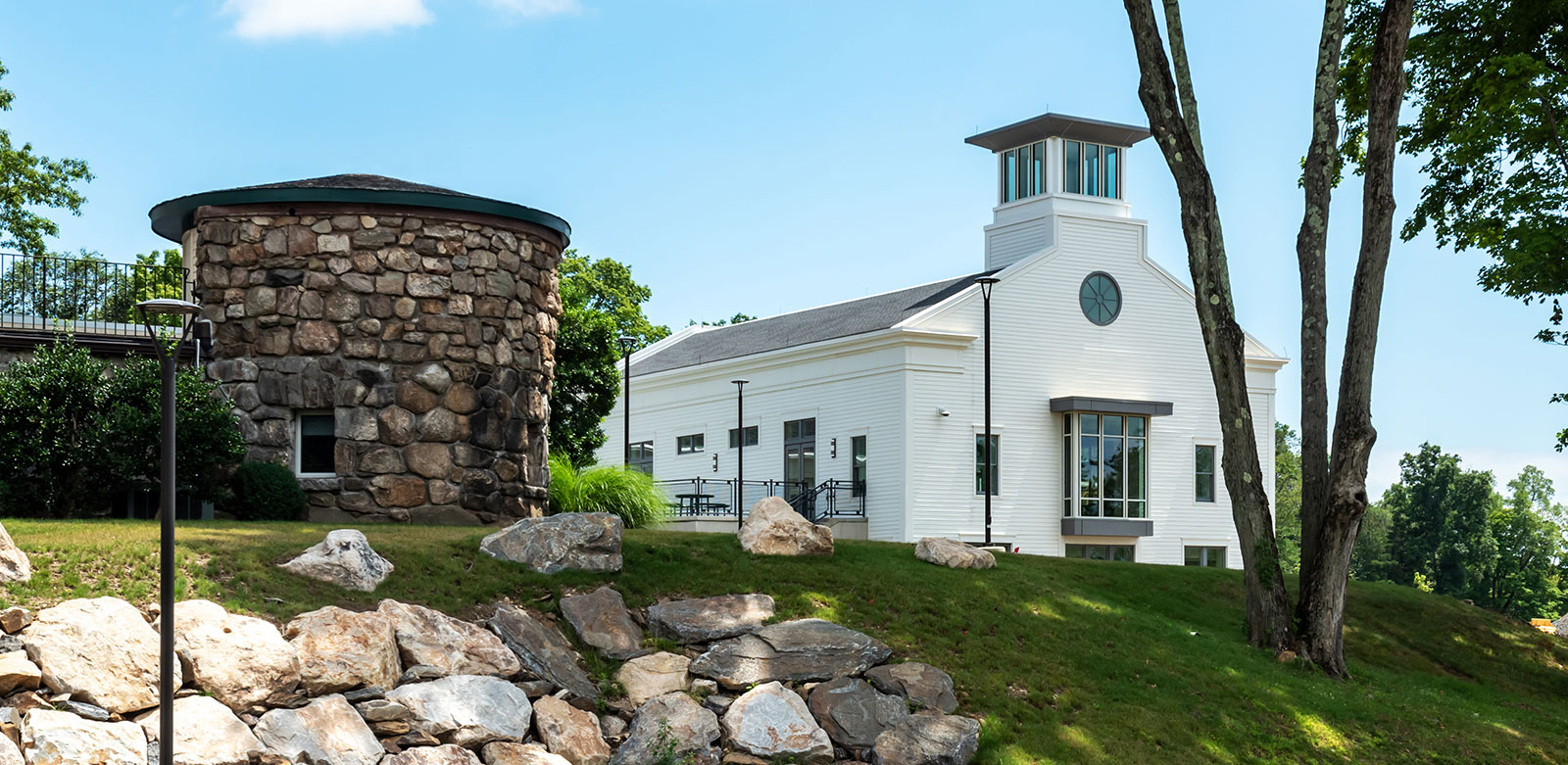
In 2017 SLAM was commissioned to program and design the first phase of a new upper school campus for Greenwich Country Day School (GCDS)- which previously had served grades K-9. Through the acquisition of an existing school and related property, this project enabled the school to serve students in grades 9-12.
![[logo]](https://slamcoll.com/wp-content/themes/sub151-SLAM/resources/images/logo-only.png) at-a-glance
at-a-glanceOur challenge was to transform an antiquated facility into a beautiful new campus center that could support the current values and pedagogical thinking of the school. The design had to integrate diverse program activities into both renovated and new space to create flexible and dynamic environments where connection, interaction, and learning are paramount.

Two renovated wings are anchored by a new three-story addition, inspired by the traditional New England meeting house, which houses a multi-purpose commons/media space, science labs and maker space as a well as a new entry lobby. The renovated areas encompass an elegant double-height dining room (formerly a gym), classrooms and administrative functions. A beautiful wood ceiling, using repurposed trees from the site, enriches the pre-function area adjacent to the dining room and supports the school commitment to sustainability. The classroom wing integrates state-of-the-art collaborative learning interstitial spaces. Natural daylight, fun colors, exposed systems, and writable colored walls make learning exciting and accessible everywhere.
The commons doubles as a media center, providing multiple functions including a library, special event/presentation area, and technology hub. Built-in bookcases and a blue glow coffered ceiling provide a relaxed living room feel to the versatile space. The new entrance lobby and lounge area, with its open stair, reclaimed wood wall and cozy stone fireplace creates a warm and inviting first impression.


The “Meeting House on the Hill” represents both a new beginning and a reverence for tradition for the upper school campus. Admissions have met and exceeded expectations. The school has experienced a new method of teaching that has empowered students and teachers alike. The diverse teaching environments serve the different levels of individual student progress. The connection between classrooms, both visually and physically, improves the interactions with other teachers and students. It was important to create a sense of community, and the commons and dining room helped to accomplish this goal. Learning and sustainability are ubiquitous.

